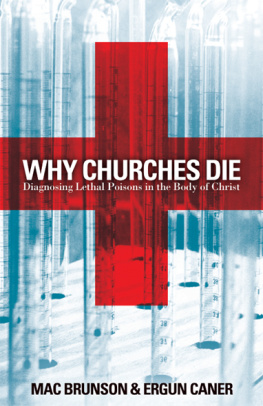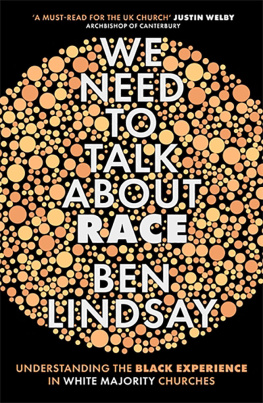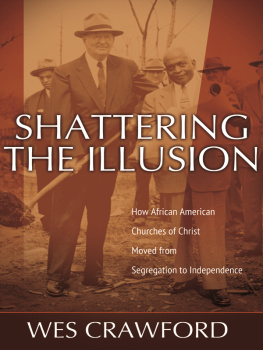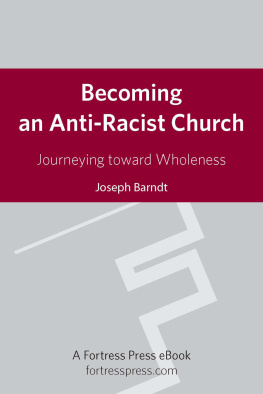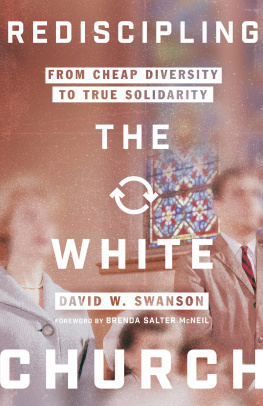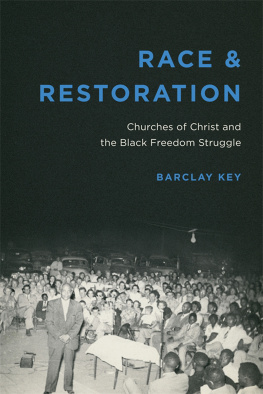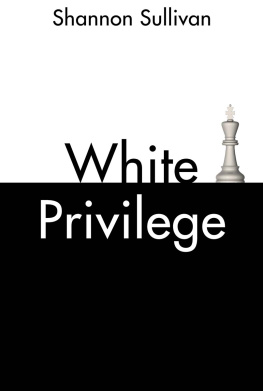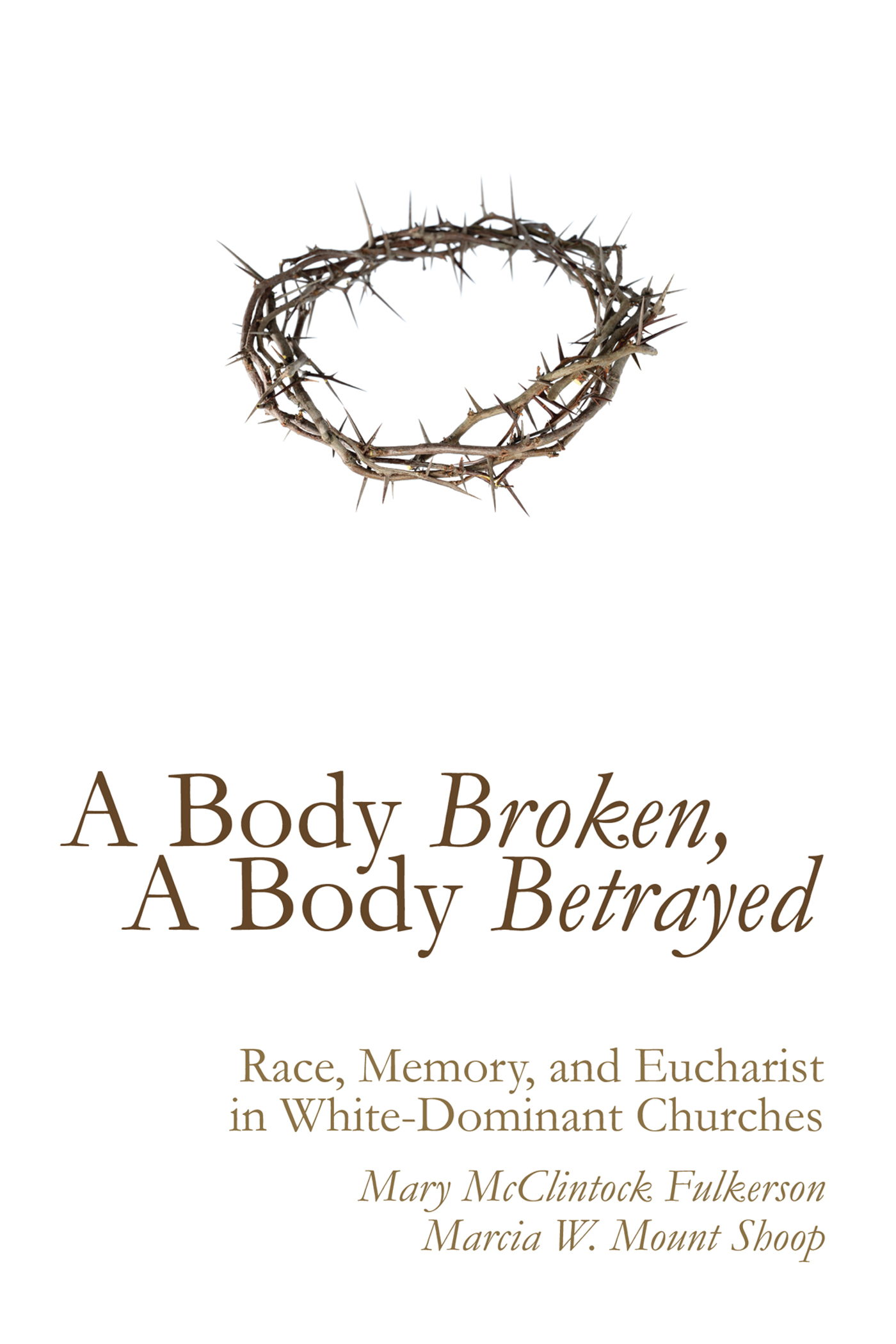A Body Broken, A Body Betrayed
race, memory, and eucharist in white-dominant churches
Mary McClintock Fulkerson and Marcia W. Mount Shoop

A BODY BROKEN, A BODY BETRAYED
Race, Memory, and Eucharist in White-Dominated Churches
Copyright 2015 Mary McClintock Fulkerson and Marcia W. Mount Shoop. All rights reserved. Except for brief quotations in critical publications or reviews, no part of this book may be reproduced in any manner without prior written permission from the publisher. Write: Permissions, Wipf and Stock Publishers, W. th Ave., Suite , Eugene, OR 97401 .
Cascade Books
An Imprint of Wipf and Stock Publishers
W. th Ave., Suite
Eugene, OR 97401
www.wipfandstock.com
ISBN : -- 62032 -
EISBN : 978-1-4982-7353-4
Cataloging-in-Publication data:
Fulkerson, Mary McClintock, 1950
A body broken, a body betrayed : race, memory, and eucharist in white-dominant churches / Mary McClintock Fulkerson and Marcia W. Mount Shoop.
xvi + 90 p. ; 21.5 cm. Includes bibliographical references.
ISBN : -- 62032 -
. Lords Supper and Christian union.. Race relationsReligious aspectsChristianity. I. Mount Shoop, Marcia W. II. Title.
BT702 .F85 2015
Manufactured in the U.S.A.
New Revised Standard Version Bible, copyright 1989 , Division of Christian Education of the National Council of Churches of Christ in the United States of America. Used by permission. All rights reserved.
Dedicated to
the great cloud of witnesses who have gathered at the Table
across the world and through the ages
If you know these things, you are blessed if you do them.
The Gospel of John 13:17
Preface
A s a white woman raised and ordained in the Presbyterian Church (U.S.A.), I grew up in a predominantly white Protestant denomination. Even as schools have gradually become more racially diverse, my childhood experience growing up in the 1950 s and 1960 s in the South was very segregated. My religious experience in Presbyterian churches was pretty much the same. Language of loving thy neighbor and welcoming all of Gods children was common but rarely, if ever, embodied so that neighbor intentionally invoked racial and class diversity.
What has been challenging and transformative for my habituation into being part of the dominant race and class began as an academic exploration of the dynamics of an interracial church. The community I studied was primarily comprised of African American and white folks, as well as persons with disabilities. I discovered that despite my theoretical commitment to welcoming the other, my experiential and bodily habituation was deeply shaped by white ownership of space, as one of my African American colleagues defines it.
Being a minority was a difficult but crucial transitional experience. My pursuit of this project exploring white practices of colorblind racism became a possibility after that research, but has been particularly enhanced by my friendship with Marcia, whose awareness and work around racial diversity in the PC (U.S.A.) were and continue to be profoundly rich and generative. Our work together has been quite important for me, and my primary acknowledgments must be of the community I studied and continue to participate in and of Marcia, whose deep wisdom about church and white colorblindness made this book possible.
I am also grateful to William Hart, who gave me language for my colorblindness. I continue to be thankful for Leoneda Inge, who co-leads the Pauli Murray reading group with me at our multiracial church, as well as those church members who have shared stories about their own experience of race throughout our five years of gathering monthly to explore and celebrate the life of the famous activist and lesbian who was the first female African American to be ordained as an Episcopal priest. And there are of course so many others whose lives and wisdom have mattered so much to me, even if I cannot name them all here.
Mary McClintock Fulkerson
Durham, North Carolina
Like Mary, I grew up steeped in the culture of the Presbyterian Church (U.S.A.). Even with a racism-aware household, a father who was a card-carrying member of the NAACP, and a mother from southern Mississippi with stories of antiracist activism in her family at a time and in a place where white people just didnt do such things, I did not begin to understand how deeply the dynamics of whiteness had shaped me until I was an adult. Going deeper than commitments to racial justice can be excruciating for white people, maybe especially for white people like me who wanted to believe we are different, we are good white people. Going deeper, however, has been a life-giving practice that keeps me on a healing path around the wounds of race and privilege.
There have been and continue to be many steps along the way in this journey with race and privilege in my life, but the most profound aspect is a very personal and precious one that words will always fail to describe adequately. That radical shift has come through lovethe love my husband, John, and I have for our godson, Chris. Chris Dixon came into our lives almost twenty years ago as an eleven-year-old growing up across the street from the church we attended in Charlotte, North Carolina. What started out as a pretty typical white, justice-oriented act of helping someone in need quickly became a connection that changed everything for us. In helping to parent Chris all of these years, I have learned more about my whiteness than from anything else in my life. These years of life together have been complicated and joyful, heartbreaking and heart-making. The love of this relationship and the growth of seeing myself and Chris in new ways are etched into this book.
I have also been blessed beyond measure by my colleagues, my sisters and brothers in Christ, whom I have worked alongside in the multicultural movement in the Presbyterian Church (U.S.A.) and in ecumenical circles with others who are hungry for a church that embodies Gods complexity with more integrity. There is no way I can name everyone in this Spirit-filled movement who has blessed my life. The Rev. James Lee, the Rev. Raafat Girgis, the Rev. Magdalena Garcia, the Rev. Dr. Wanda Lundy, the Rev. Dr. Gun Ho Lee, the Rev. Jerrod Lowry, the Rev. Nibs Stroupe, and the Rev. Jake Kim are just a few of the people from the Presbyterian context who have been a blessing on this journey.
I have appreciated the work of Mary McClintock Fulkerson for a long time. I give thanks for the opportunity to build a friendship with her during my familys time in Chapel Hill, North Carolina. Mary and I immediately found that we had a shared passion for the exploration of race and privilege. For both of us this passion comes from the heart of our lives as believers and as theologians. This passion comes fraught with pain and disappointment. It also comes with deep conviction. Marys diligence and intellect have made this project more conversant with a broader set of questions. She is forever finding more resources, more conversation partners, and more insights. I am grateful for the texture those commitments brought to this book. And I am also grateful that our friendship continues from here.
I also extend my gratitude to all the church communities who have helped form me and who have welcomed me into their midst as pastor, teacher, preacher, officiant at the Lords Table, and child of God. This book is written for the church and toward the redemptive promise that we profess. Thanks be to God for the visions that call us toward healing the Body of Christ.


